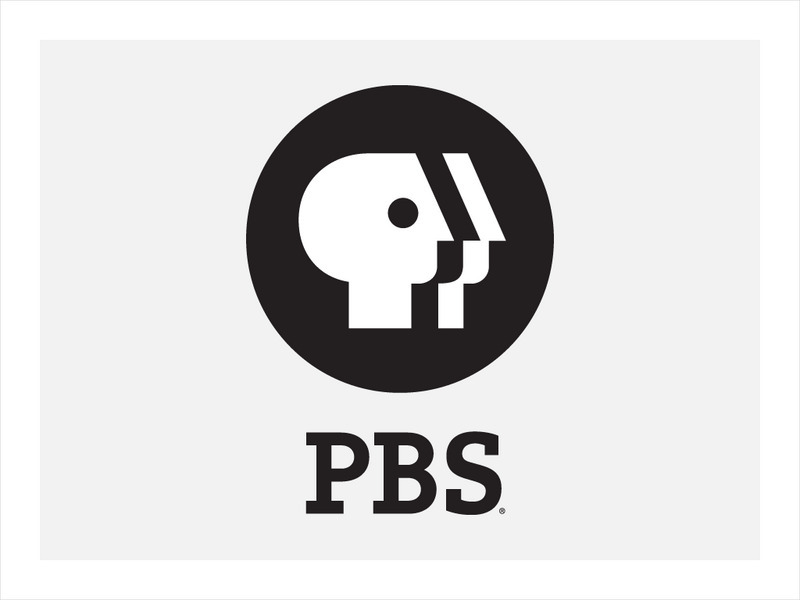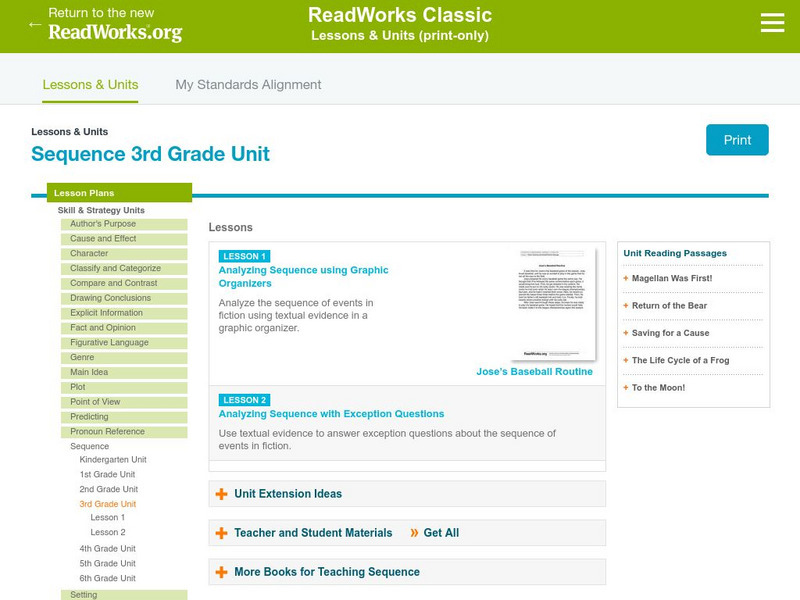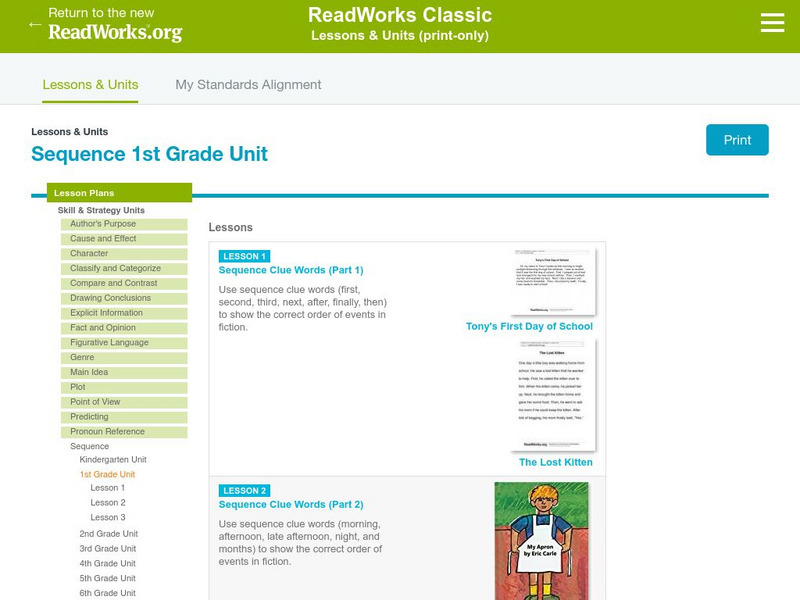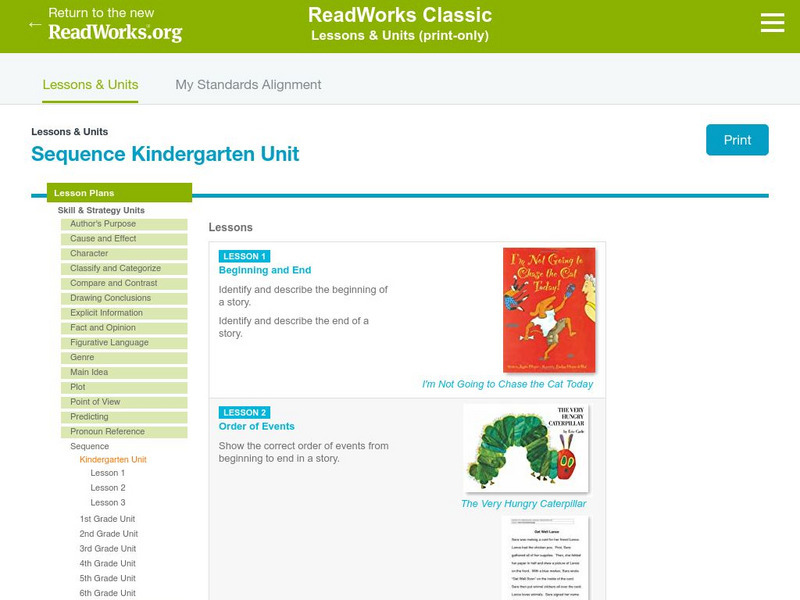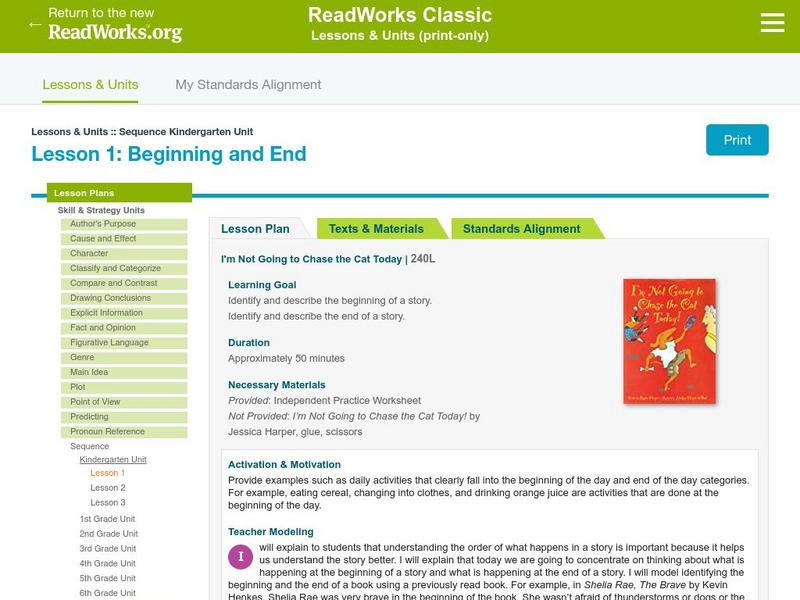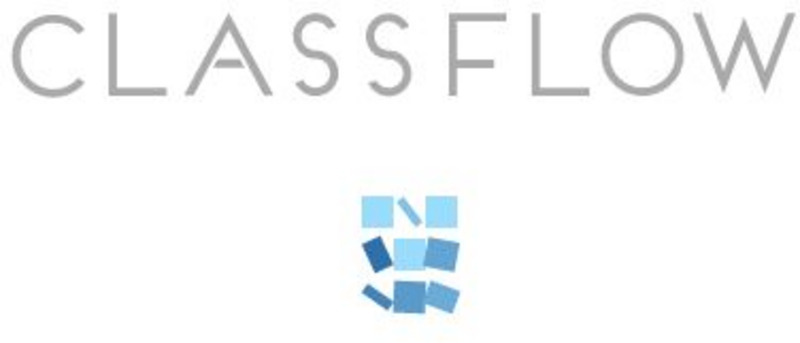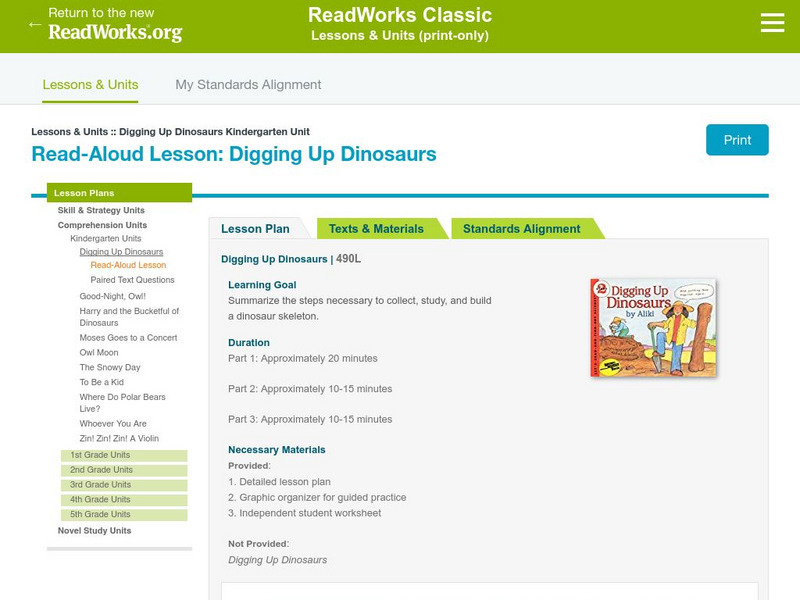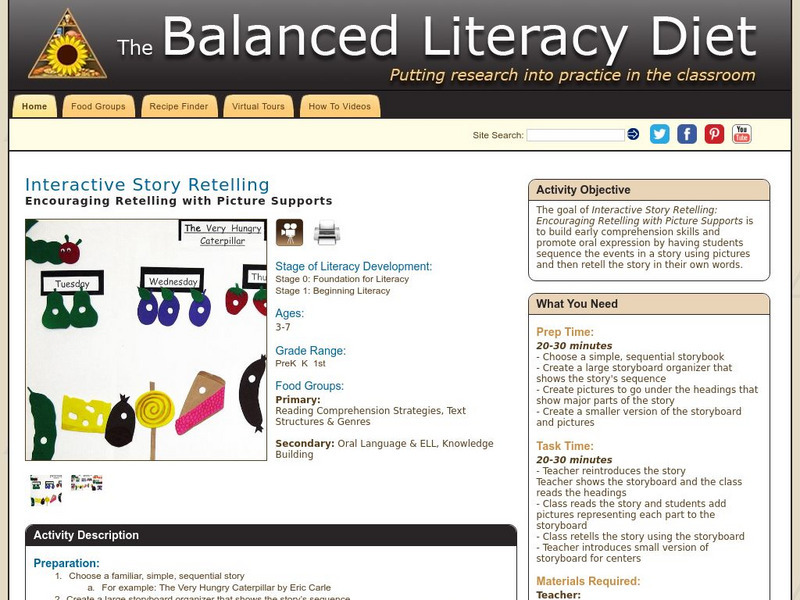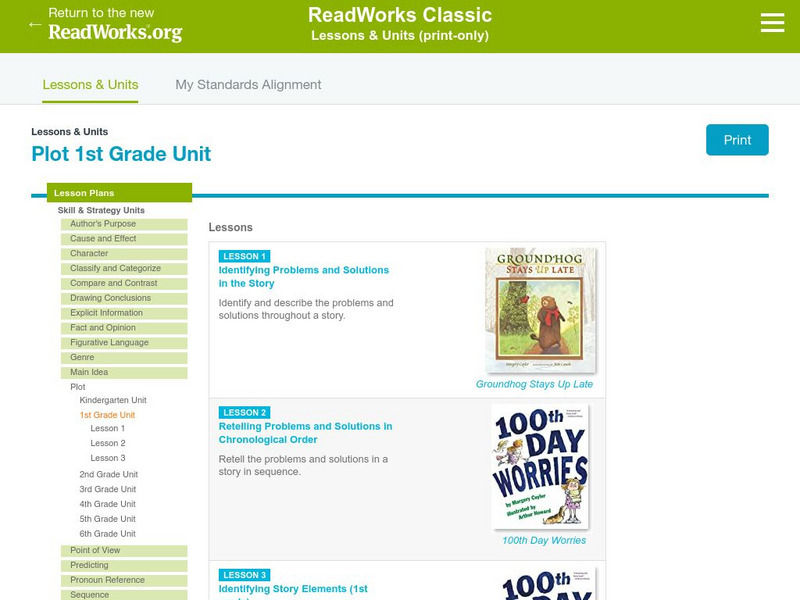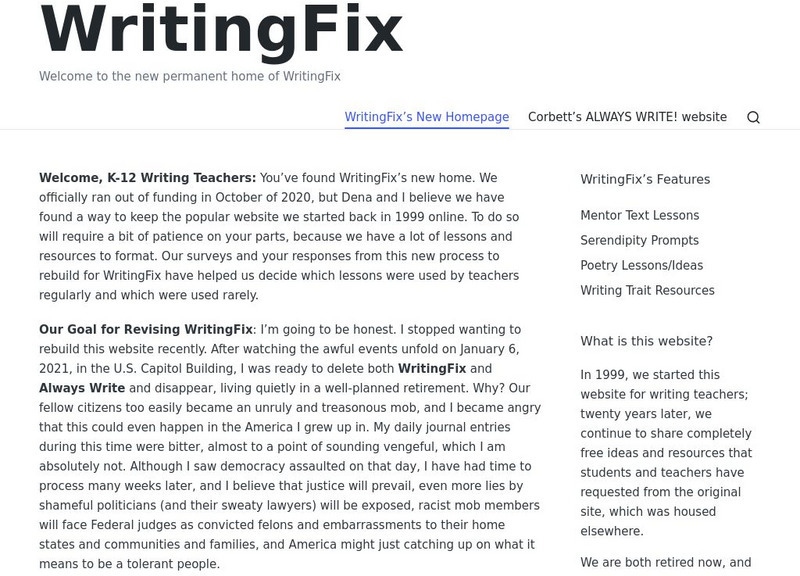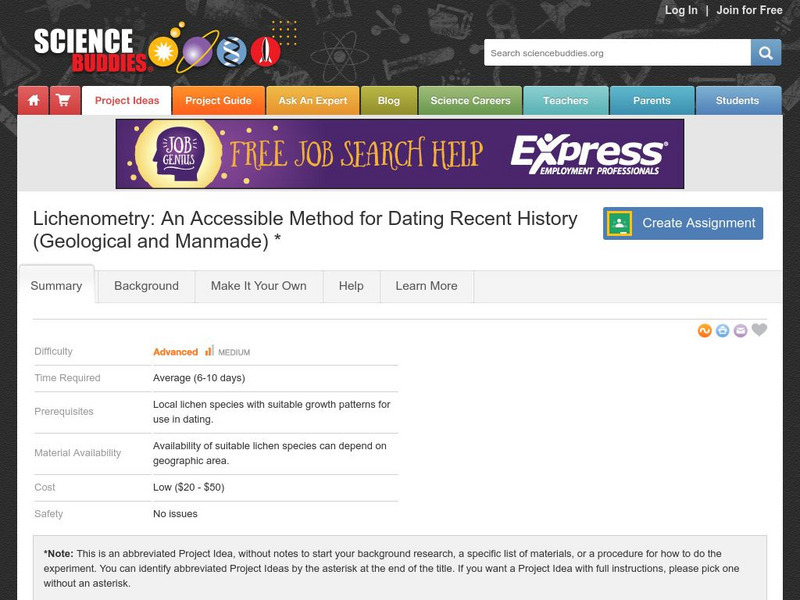Hi, what do you want to do?
PBS
Pbs Teachers: Story Writing With Arthur
This series of 12 downloadable activities teach students some basics of story writing, using books or videos from the PBS "Arthur" series as a springboard. Activities include creating story maps, asking questions about characters and...
Read Works
Read Works: Sequence 3rd Grade Unit
[Free Registration/Login Required] This website provides a series of two lesson plans designed to teach learners to create a graphic organizer showing the sequence of events in a fiction text. The lessons include ideas for direct...
Read Works
Read Works: Sequence 1st Grade Unit
[Free Registration/Login Required] This site provides a series of three lesson plans designed to teach students to recognize and use word clues to put story events into the correct sequence and retell the story accordingly. Lessons are...
Read Works
Read Works: Sequence 2nd Grade Unit: Flashback Sequence
[Free Registration/Login Required] This lesson plan helps students identify the sequence of events in a story with flashback. The lesson includes ideas for direct teaching, guided practice, and independent practice and utilizes the book...
Read Works
Read Works: Grade 2: Three Lesson Unit: Sequence
[Free Registration/Login Required] A series of three lesson plans designed to teach students to retell and summarize a fiction story told in chronological order and a story told with flashback. Lessons are based on the books First Day...
Read Works
Read Works: Sequence Kindergarten Unit
[Free Registration/Login Required] A series of three lesson plans designed to teach students to recognize the beginning and ending of a story and use word clues to put story events into the correct sequence. Lessons are based on the...
Read Works
Read Works: Sequence Kindergarten Unit: Beginning and End
[Free Registration/Login Required] This webiste provides a instructional activity in which students identify and describe the beginning and end of a fiction story. Lesson includes ideas for direct teaching, guided practice, and...
Better Lesson
Better Lesson: Plant Life Cycle Introduction
Sequencing is an important skill for kindergarten students. This lesson uses nonfiction texts to allow students to make a real-life connection to the skill of sequencing and learn about the plant cycle at the same time! Included are...
Other
Abrams Books: Picture Day Perfection: A Common Core State Standards Aligned
This activity and discussion guide uses the book "Picture Day Perfect" to teach multiple common core state standards for language arts. Included in this lesson are discussion questions, a craft project, printable worksheets, and an...
ClassFlow
Class Flow: Sequencing Retelling
[Free Registration/Login Required] Students are introduced to the concept of story sequencing and are asked to sequence ideas within several story situations.
Read Works
Read Works: Read Aloud Lesson: Digging Up Dinosaurs
[Free Registration/Login Required] Teachers will read "Digging Up Dinosaurs" using the close reading technique. Students will use graphic organizers to summarize the steps necessary to collect, study, and build a dinosaur skeleton.
The Balanced Literacy Diet
The Balanced Literacy Diet: Interactive Story Retelling
The goal of Interactive Story Retelling: Encouraging Retelling with Picture Supports is to build early comprehension skills and promote oral expression by having learners sequence the events in a story using pictures and then retell the...
ClassFlow
Class Flow: Retelling the Story
[Free Registration/Login Required] This flipchart helps to teach students how to retell main events from a story and sequence events.
Science Education Resource Center at Carleton College
Serc: Mn Step: Relative Dating Using "The Block"
This lesson involves an innovative strategy for introducing the concept of relative dating using a block of wood that has been painted, damaged, and nailed. The task for students is to analyze the order in which these events happened and...
Read Works
Read Works: Plot 1st Grade Unit
[Free Registration/Login Required] A series of three lesson plans designed to teach students to identify problems and solutions in fiction text and to retell a story's problem and solution in sequence. Students learn to identify the plot...
Better Lesson
Better Lesson: Procedural Text: Recipe
A teacher created lesson plan to help students conquer how to make connections between directions in an effort to create something. This activity will have students sharing recipes and understanding why recipes should be followed in...
Writing Fix
Writing Fix:"oh, That's Good!" "No, That's Bad!"
How can something that is good, be bad and something that is bad, be good? Inspired by the pattern and concept in Margery Cuyler's picture book That's Good! That's Bad!, learners will brainstorm a sequence of related events as the story...
Science Buddies
Science Buddies: Lichenometry: An Accessible Method for Dating Recent History
Geology and archeology are examples of historical sciences. Their practitioners rely on multiple methods for establishing dates and temporal sequences as they seek to construct a history from the available evidence. This project will...





